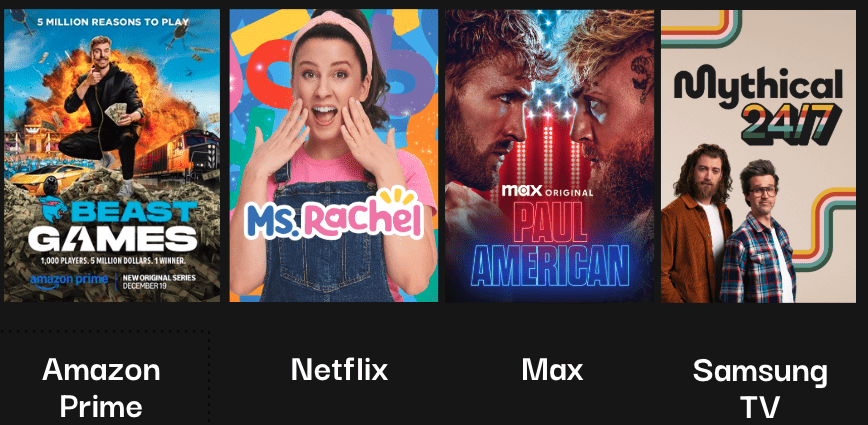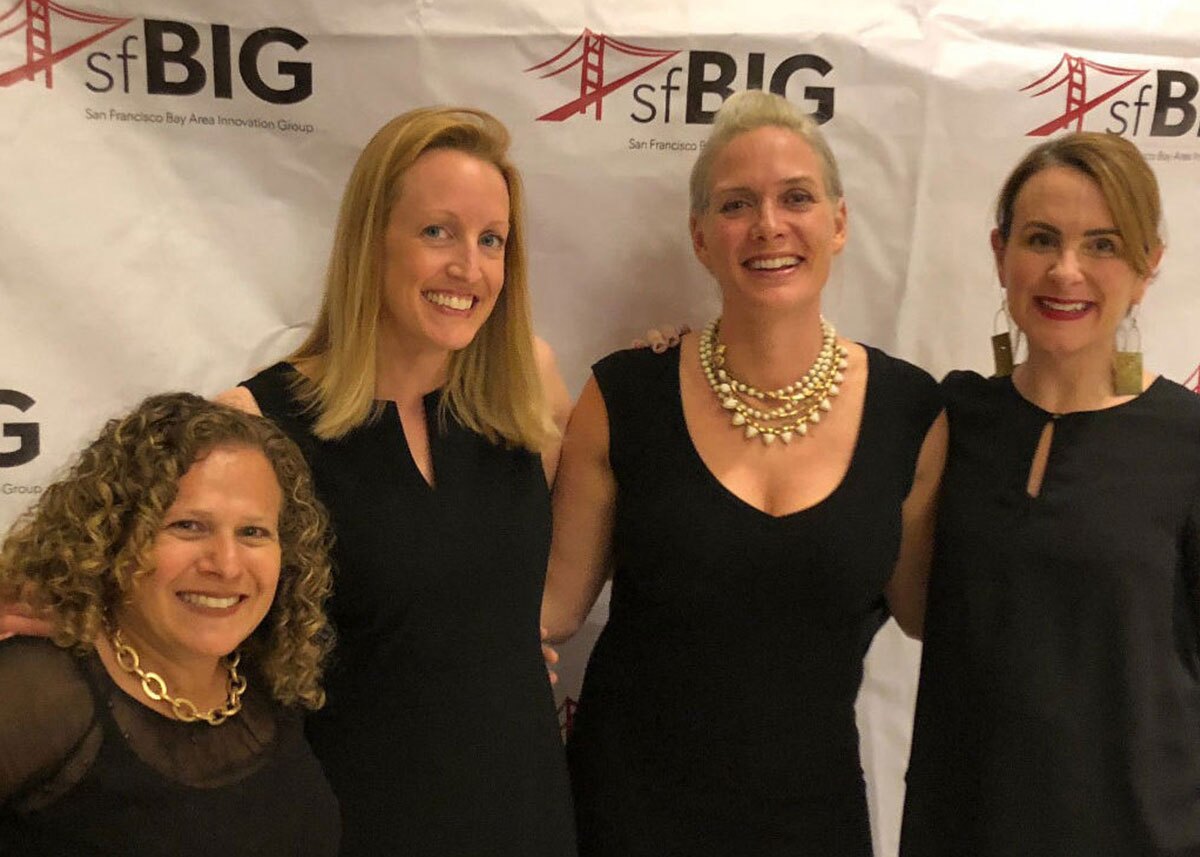By: Kathy P. Nguyen , AXM Media Director & John B. McGrane , Director of A.I. Innovation & Brand
Not long ago, content creators were seen as a modern upgrade to the traditional celebrity endorsement—quirky, authentic, and often lower-cost. Today, they’re something far more potent: fully formed brands with their own loyal audiences, values, aesthetics, and influence. And they’re starting to rival—if not eclipse—legacy media companies in both cultural relevance and commercial impact.
For brand marketers still slotting creators into “influencer tiers” and short-lived paid campaigns, it’s time to zoom out. Creators are the new media channels. They’re also publishers, entertainment studios, and tastemakers. And they’re reshaping how consumers discover, trust, and buy from brands.
From Influencer to Independent Brand
Let’s start with trust.
Creators aren’t just media alternatives. In many ways, they’re the new mass media—but with increasingly more credibility. Consumers, especially younger ones, increasingly look to creators who “speak their language.” While traditional media still commands higher baseline trust for general news and information—62% of U.S. adults say they trust it, compared to 44% for social media—creators are rapidly gaining ground in areas that matter most to modern marketers: influence, relatability, and consumer behavior. Among Gen Z, over half say they trust influencers more than brands or journalists, and 61% find creators more relatable than celebrities. Why? Because audiences don’t see them as institutions, but as peers—people they follow, listen to, and often act on. That’s why creators dominate in product discovery, especially among younger consumers: 60% of Gen Z say they find new products through influencers, compared to just 20% through TV and a mere 7% through print. In this new trust economy, credibility is built less on authority and more on authenticity, consistency, and community—areas where content creators excel and traditional media often struggles to compete.
How big is the shift?
According to Pew Research, 21% of U.S. adults now regularly get their news from content creators—individuals with 100K+ followers on platforms like YouTube, TikTok, and Instagram. Among Gen Z (ages 18–29), that number soars to 37%.
Gen Z now spends an average of 6 hours and 5 minutes per day on their phones, most of it in creator-led environments like TikTok and YouTube. They spend more time on TikTok than the average adult spends across all social platforms combined, clocking in at 57 minutes per day, according to eMarketer forecasts.
Creators Now Rival Media Companies in Reach and Relevance
Let’s talk scale.
More people in the U.S. will watch YouTube and social networks in 2025 than linear TV, according to eMarketer. At the same time, content consumption preferences are tilting heavily toward creator-style content. In fact, 60% of Gen Z say they prefer user-generated content over subscription video-on-demand (SVOD) platforms like Netflix or Hulu. This is not just about cost—it’s about connection, personalization, and perceived authenticity.
This isn’t a small trend either; it’s a shift in mass media itself, with ad dollars quickly following the eyeballs as influencer marketing spending rose by 23.7% last year – which far surpassed eMarketer’s original 2024 growth forecast of 16%. That means that in 2025, another $1.37 billion dollars will be added to the market, pushing creator spending to $10.52 billion.

The Commerce Layer: Where Creators Become Conduits for Sales
We’ve long known that creators move culture, but in 2025, they are increasingly moving product.
Social commerce is growing more than twice as fast as overall ecommerce, per eMarketer. TikTok Shop’s explosive growth in 2024 is a case in point—accelerating adoption of shoppable video and creator-led product discovery.
Retailers and marketplaces are paying attention too. Amazon has expanded its creator affiliate ecosystem. Walmart has partnered with creators across its social footprint to blend storytelling with direct response. And emerging platforms like Flip and Whatnot are built entirely on the creator-commerce connection.
So What Should Brands Do?
If creators are becoming media companies—and in many cases, micro-networks with engaged communities and distinct editorial voices—brands need to shift how they engage.
Here’s how:
- Think Long-Term: Creators should be treated more like content partners or franchises—not one-off paid spokespeople. Long-term partnerships build brand equity on both sides.
- Co-Create: Invest in creator-led storytelling. That could be a serialized TikTok mini-series, a product drop curated by a creator, or a behind-the-scenes doc on YouTube. These formats drive brand lift and emotional resonance that traditional ads often miss.
- Reallocate Budget Like It’s 2025: Move money toward platforms where creator content dominates—YouTube, TikTok, Instagram Reels, and increasingly, podcasts. According to eMarketer, ad dollars are already following creators into these ecosystems, with digital video and social seeing some of the fastest growth in retail ad spend.
- Treat Creators Like Strategic Channels: As creator reach rivals that of some digital publishers and niche cable networks, media planners should include top creators as line items in their media buys, not just as influencer spend.
Watchouts and Considerations
As creators take on the role of media brands, the shift demands more than budget reallocation—it requires strategic discipline. One of the biggest traps is mistaking reach for resonance. A creator with a massive audience may look impressive on paper, but if their voice, values, or content style doesn’t align with your brand, the partnership is unlikely to land. On the flip side, creators with smaller, more engaged followings can deliver higher-impact results through trust and relevance. Likewise, brands must resist the urge to script or over-engineer. When the message feels overly polished or out of character, audiences tune out. Authenticity is what brought them there—don’t dilute it.
Beyond content itself, a common misstep is treating creator partnerships as one-and-done media buys rather than strategic collaborations. Creators aren’t just distribution channels; they’re storytellers with equity to offer—if given the space to co-create. And when it comes to metrics, marketers must shift their lens. Traditional KPIs like impressions and likes don’t capture the full picture. What matters now is attention, community response, and downstream behaviors. Navigating this shift successfully means embracing a new mindset—one grounded in partnership, adaptability, and respect for the creator’s craft.
Who’s doing it right?
Several brands have effectively leveraged partnerships with content creators to enhance their reach, authenticity, and engagement. Here are some notable examples:
- Adidas and Adriene Mishler: Adidas collaborated with yoga instructor and influencer Adriene Mishler, known for her yoga and mindfulness content. This partnership aligned with Adidas’ focus on wellness and empowerment, resonating with audiences interested in health and fitness.
- Dunkin’ and Charli D’Amelio: Dunkin’ partnered with TikTok megastar Charli D’Amelio to create “The Charli” drink, blending product collaboration with creator storytelling. The result? A 57% increase in daily app downloads and a 45% increase in cold brew sales. It wasn’t just a celebrity tie-in—it was a collaboration that activated her highly engaged fan base authentically.
- E.l.f. Cosmetics: E.l.f. Cosmetics launched the viral #EyesLipsFace challenge on TikTok, collaborating with creators to drive over 7 billion views. Instead of pushing product features, they leaned into the platform’s native behaviors—sparking organic UGC and massive earned reach.
- Marc Jacobs and TikTok Creators: Marc Jacobs engaged with TikTok creators to produce authentic, creator-driven content, leading to viral campaigns. For instance, a “cooked” tote bag video resonated with TikTok’s audience, demonstrating the brand’s adaptability to platform-specific trends.
With this shift in consumer behavior, marketers must embrace creators not just as influencers, but as critical strategic partners who can sustain audience engagement and brand loyalty.
The future belongs to brands that understand the power of authentic storytelling, community-centric content, and creator-led initiatives. Those who strategically integrate creators into their broader media plans will lead in consumer engagement, relevance, and profitability in an increasingly fragmented media environment.
Sources:
Pew Research Center, America’s News Influencers, November 2024, via eMarketer report
eMarketer, US Digital Habits by Generation 2024
Pew + eMarketer, The Rise of Political and News Creators, 2025
eMarketer, 5 Areas Our Analysts Are Watching in 2025
eMarketer, Retail Roadmap 2025 – Trends in AI, Loyalty, Retail
eMarketer, Retail Roadmap 2025
eMarketer, The Future of Digitl 2025




